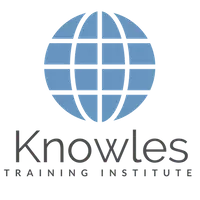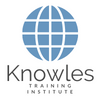Risk Assessment And Management Course in Singapore

About This Risk Assessment And Management Training Course
Risk Assessment And Management Course in Singapore
In a company, a risk could come in a lot of forms—in negotiations when risking the loss of an investor, in marketing when risking public acceptance of a product, or with security when risking safety. Whatever the form is, risks must be assessed and managed so that any potential loss could be avoided.
Who Should Attend This Risk Assessment And Management Workshop
This Risk Assessment And Management workshop is ideal for anyone who would like to gain a strong grasp and improve their Risk Assessment And Management.
All Staff Within An Organisation
Managers
Team Leaders
Executives
Assistants
Officers
Secretaries
Group Size For This Risk Assessment And Management Training Program
The ideal group size for this Risk Assessment And Management course is:
Minimum: 5 Participants
Maximum: 15 Participants
Course Duration For This Risk Assessment And Management Skills Course
The duration of this Risk Assessment And Management workshop is 2 full days. Knowles Training Institute will also be able to contextualised this workshop according to different durations; 3 full days, 1 day, half day, 90 minutes and 60 minutes.
2 Full Days
9 a.m to 5 p.m
Risk Assessment And Management Course Benefits
Below is the list of course benefits of our Risk Assessment And Management course
- Defining what risk assessment means in the workplace as part of the preventive occupational safety
- Describing how risk assessment as a systematic process creates a safe work environment
- What is risk management and its approach to hazards and measures to reduce and eliminate injuries
- Understanding a good risk assessment based on a total evaluation, that leads to a constant rise of the safety level
- How to identify hazards based on the safety of employees in the workplace
- What are the inconveniences and hazards related to work at the workplace, the facilities, work environment and working conditions
- Identifying the steps of a risk assessment with implementation as the end-point
- Understanding the responsibilities of an employer to carry out and maintain a fire and earthquake safety risk assessment in the workplace
- Describing the responsibilities of the employees under health and safety law to take care of the health and safety of themselves and others
- Using the hierarchy of controls to choose the most effective control measures
- Learning how to eliminate or minimize the risk so far as is reasonably practicable
- Recording how to assess and manage the risks
Risk Assessment And Management Course Objectives
Below is the list of course objectives of our Risk Assessment And Management course
- Present how risk assessment is used as preventive occupational safety
- Explore how risk management works hand-in-hand with security and safety operations
- Inspect how to identify possible risks in a workplace and to manage it
- Illustrate ways to perform effective assessments and maintenance plans in an organization
- Impart ways to effectively determine the safety priority in any circumstance of the employees
- Distinguish how to assess and minimize risks for scenarios where risk cannot be avoided
- Observe the different steps in risk assessment and learn to initiate an action plan
- Acknowledge the legal aspects that ties risk management to the responsibility of the employer
- Examine how an employee’s health and safety also involves their participation and cooperation
- Teach the hierarchy of controls to set effective measures on risk management
- Orient the ways to focus on prioritizing how a risk can be eliminated or minimized to the point that the occupation becomes reasonably practicable
- Conceptualize the means to create written records and how to review them
Course Content For This Risk Assessment And Management Training Course
Below is the list of course content of our Risk Assessment And Management training course
- Defining what risk assessment means in the workplace as part of the preventive occupational safety
- Describing how risk assessment as a systematic process creates a safe work environment
- What is risk management and its approach to hazards and measures to reduce and eliminate injuries
- Understanding a good risk assessment based on a total evaluation, that leads to a constant rise of the safety level
- How to identify hazards based on the safety of employees in the workplace
- What are the inconveniences and hazards related to work at the workplace, the facilities, work environment and working conditions
- Identifying the steps of a risk assessment with implementation as the end-point
- Understanding the responsibilities of an employer to carry out and maintain a fire and earthquake safety risk assessment in the workplace
- Describing the responsibilities of the employees under health and safety law to take care of the health and safety of themselves and others
- Using the hierarchy of controls to choose the most effective control measures
- Learning how to eliminate or minimize the risk so far as is reasonably practicable
- Recording how to assess and manage the risks
Risk Assessment And Management Value Added Materials
Each participant will receive the following materials for the Risk Assessment And Management course
Risk Assessment And Management Learner’s Guide
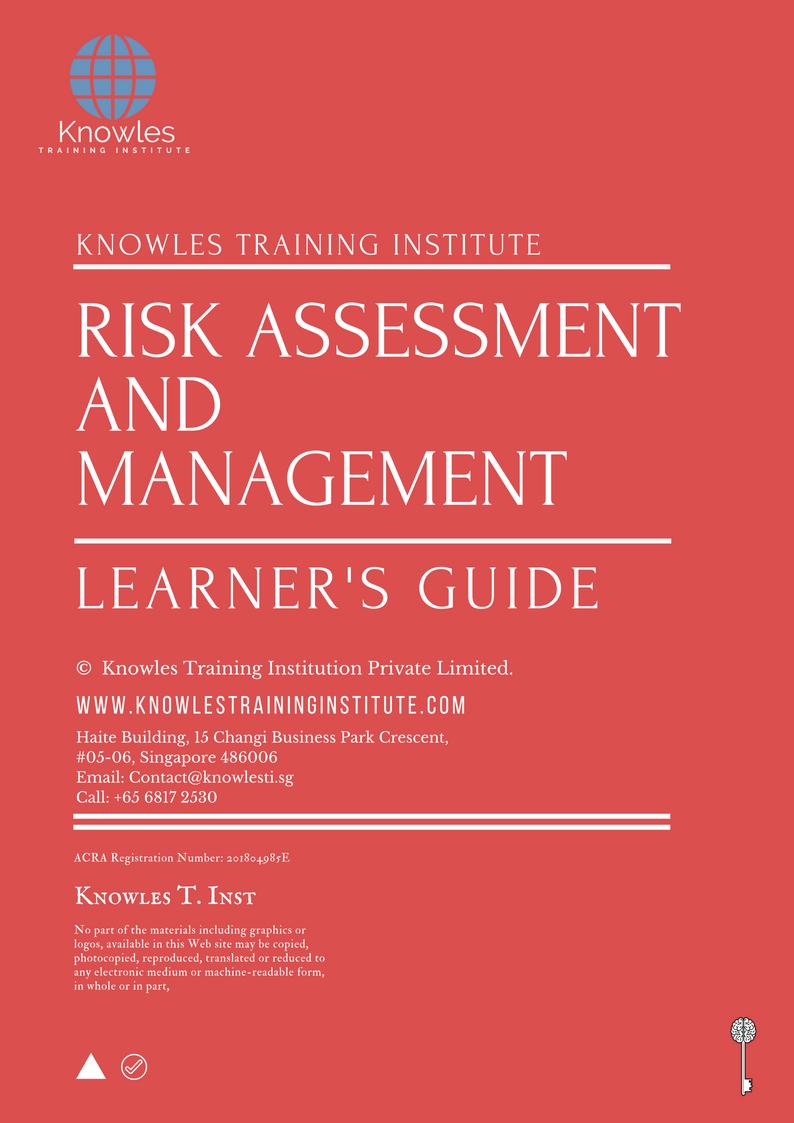
Risk Assessment And Management Key Takeaways Notes

Risk Assessment And Management Essentials Ebook
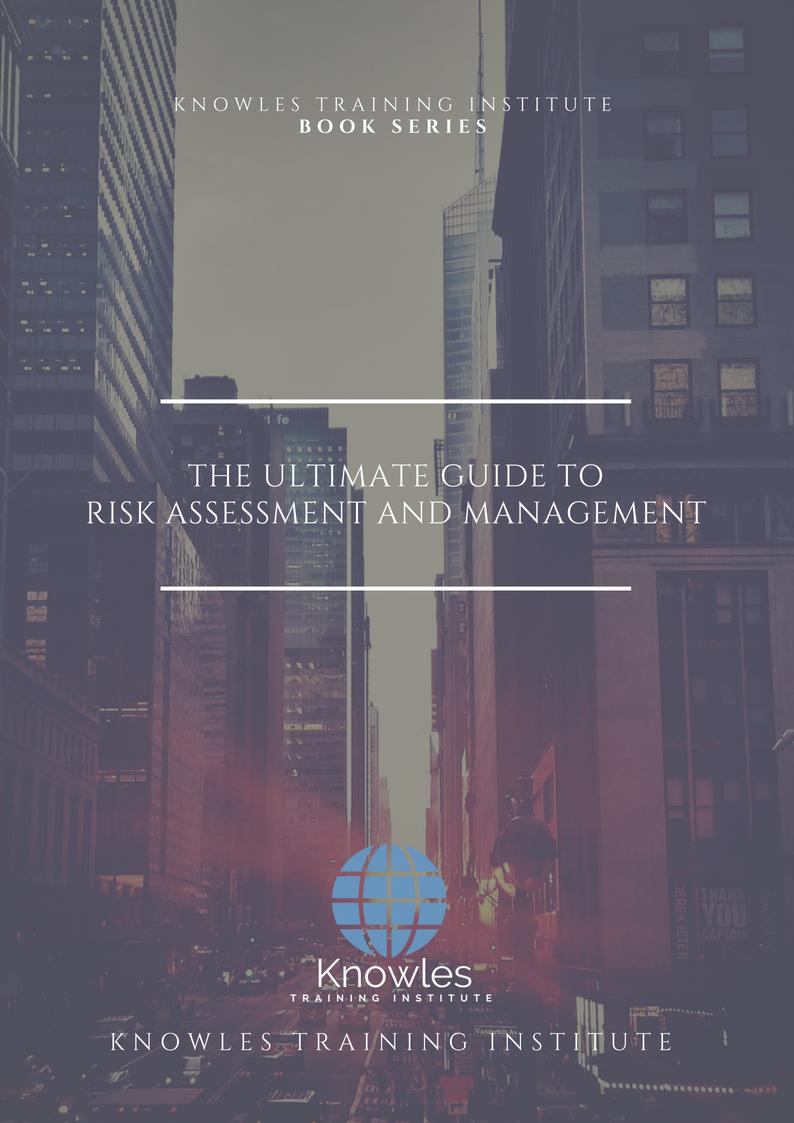
Risk Assessment And Management Course Handouts
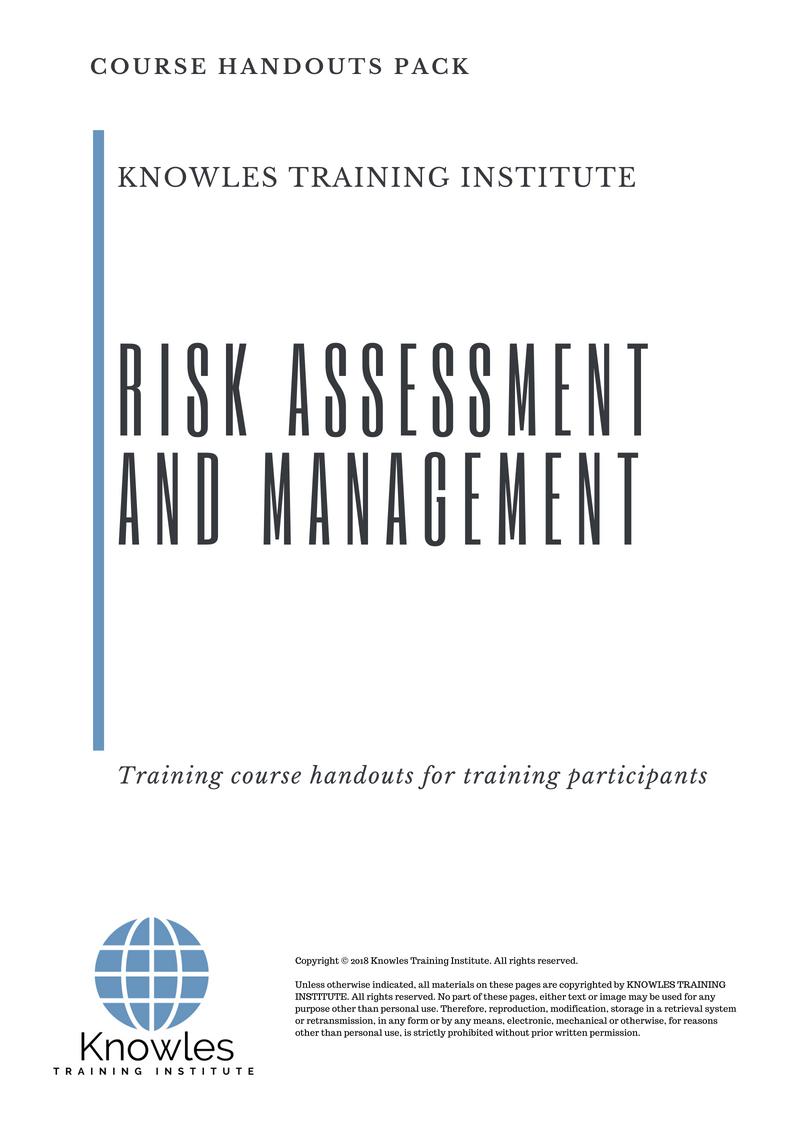
Risk Assessment And Management 30-Day Action Plan
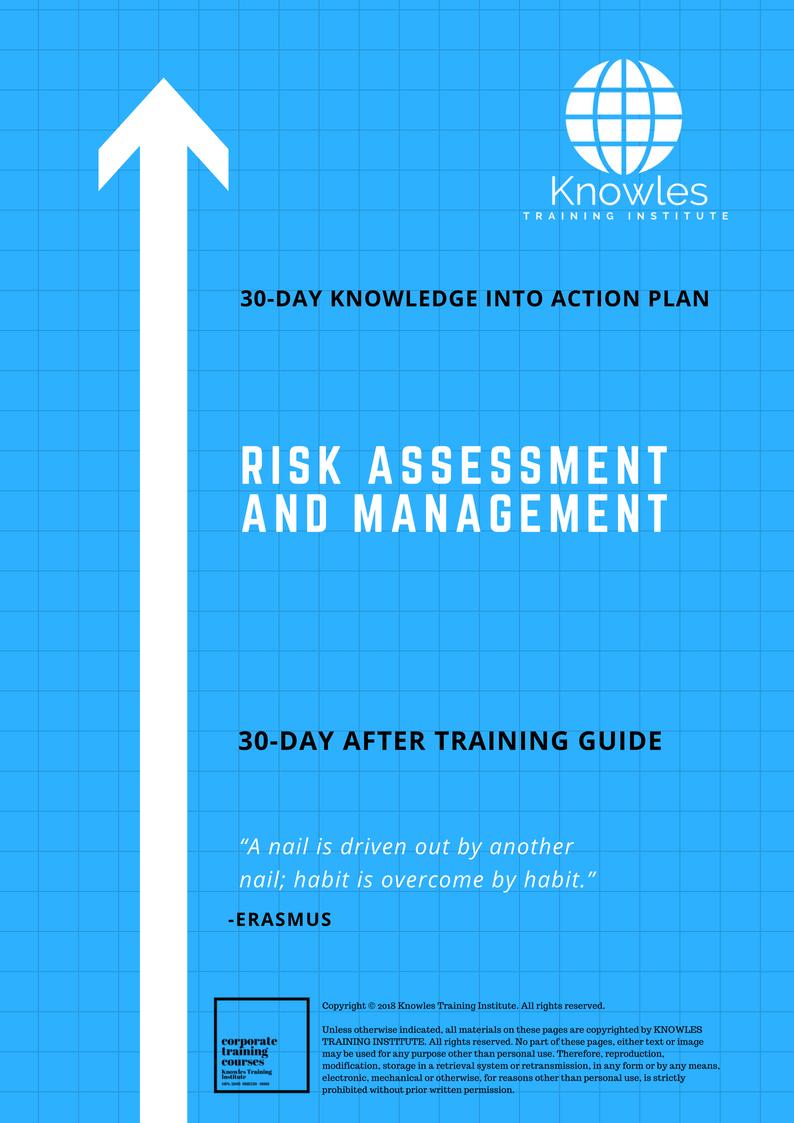
Risk Assessment And Management MindMaps Pack
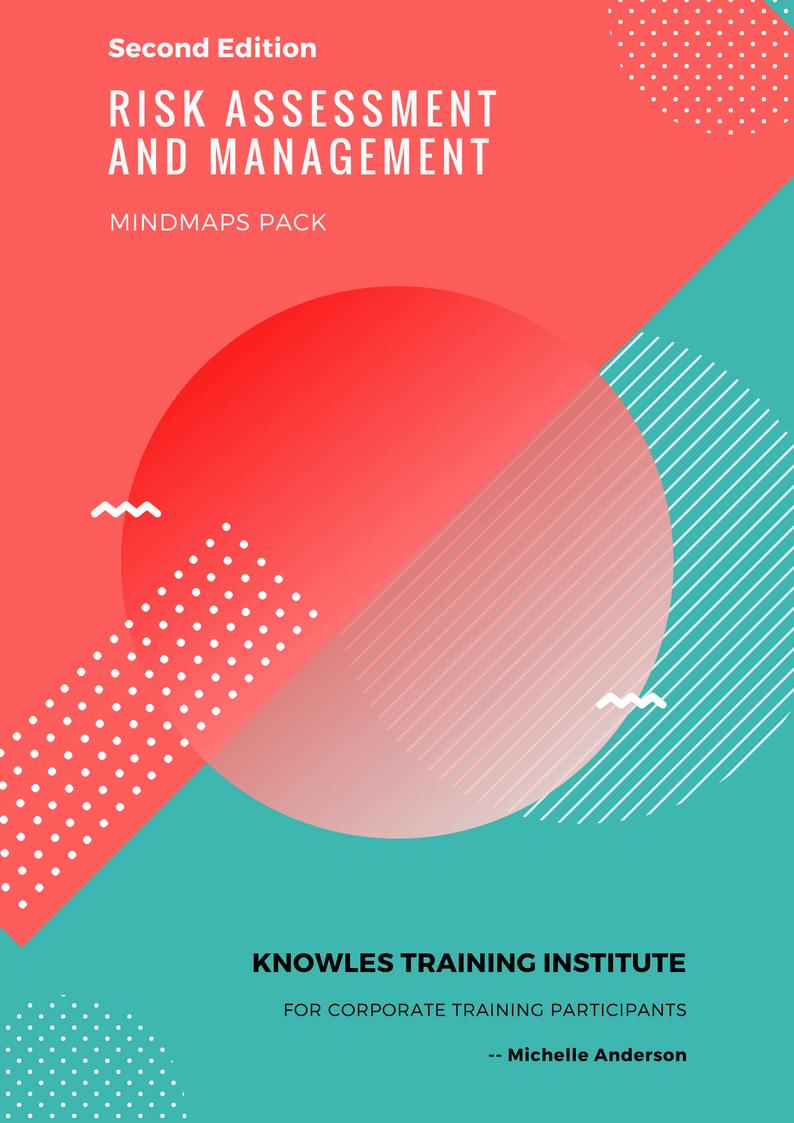
Risk Assessment And Management PPT Slides Used During Course
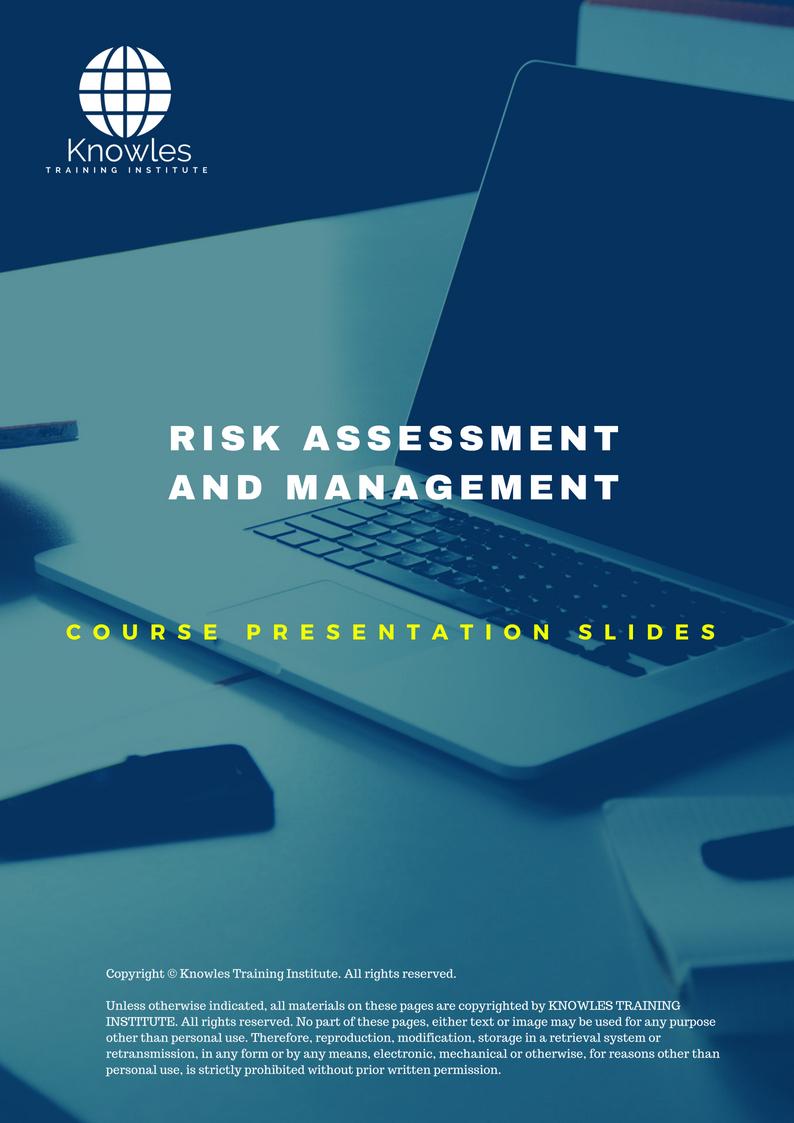
Risk Assessment And Management Long-Term Memory Flashcards Pack
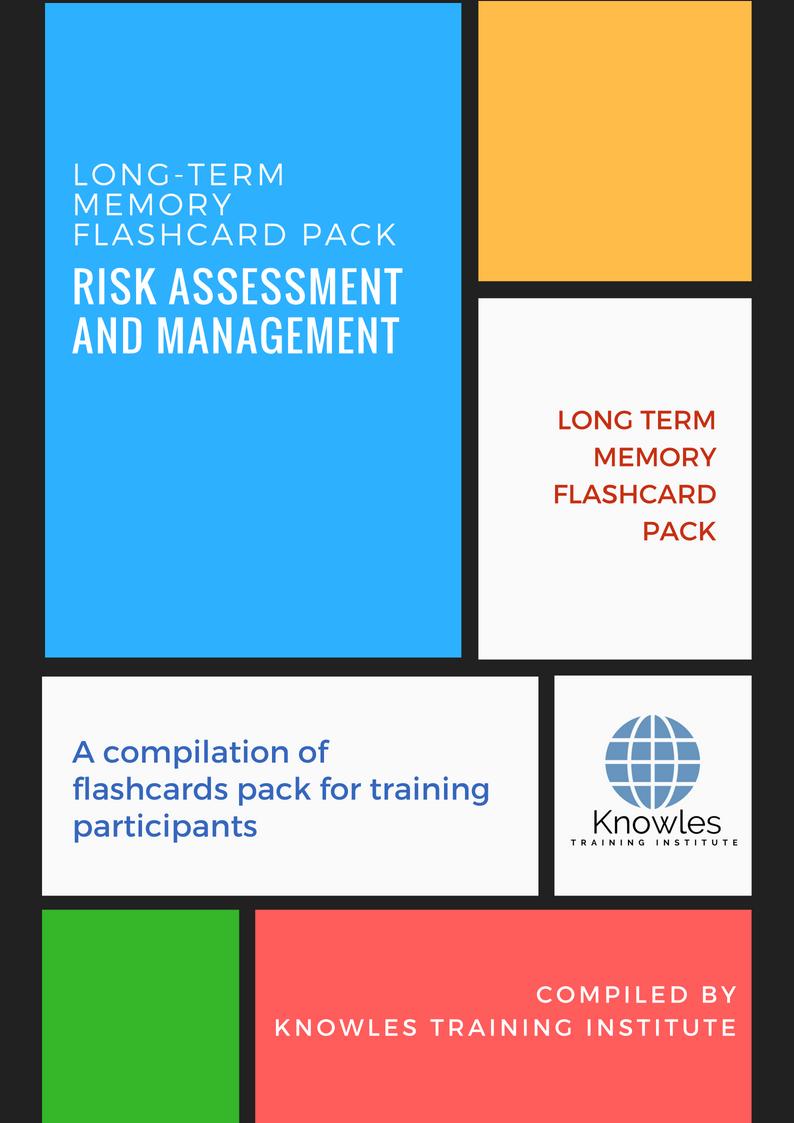
Risk Assessment And Management E-Learning Course

Risk Assessment And Management Online Video Course

Risk Assessment And Management Essentials Audiobook
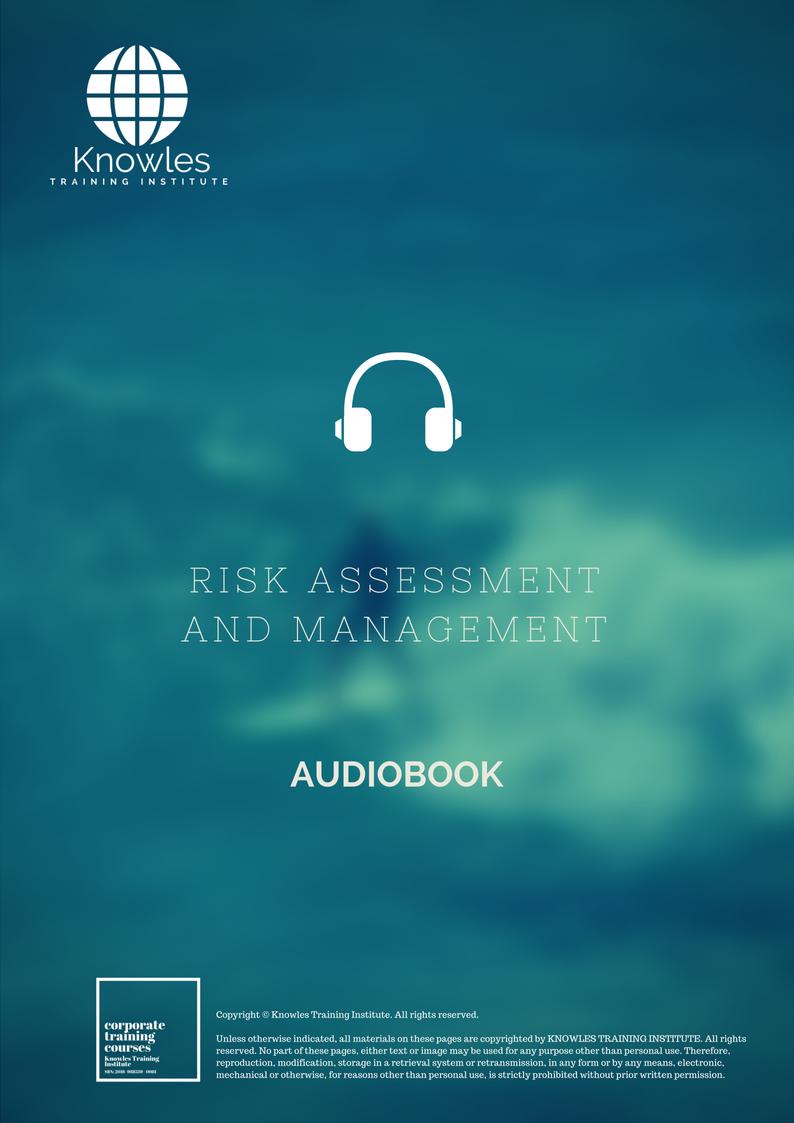
Risk Assessment And Management Infographics Pack
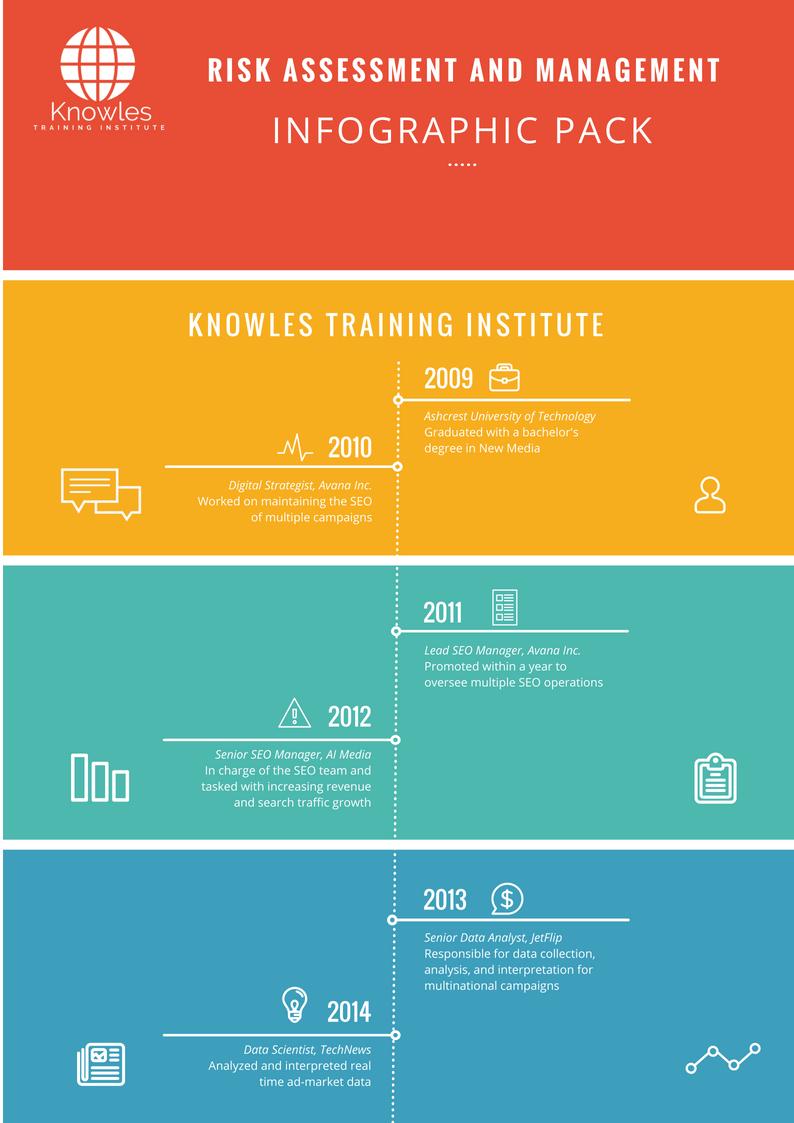
Risk Assessment And Management Certification
Each course participant will receive a certification of training completion
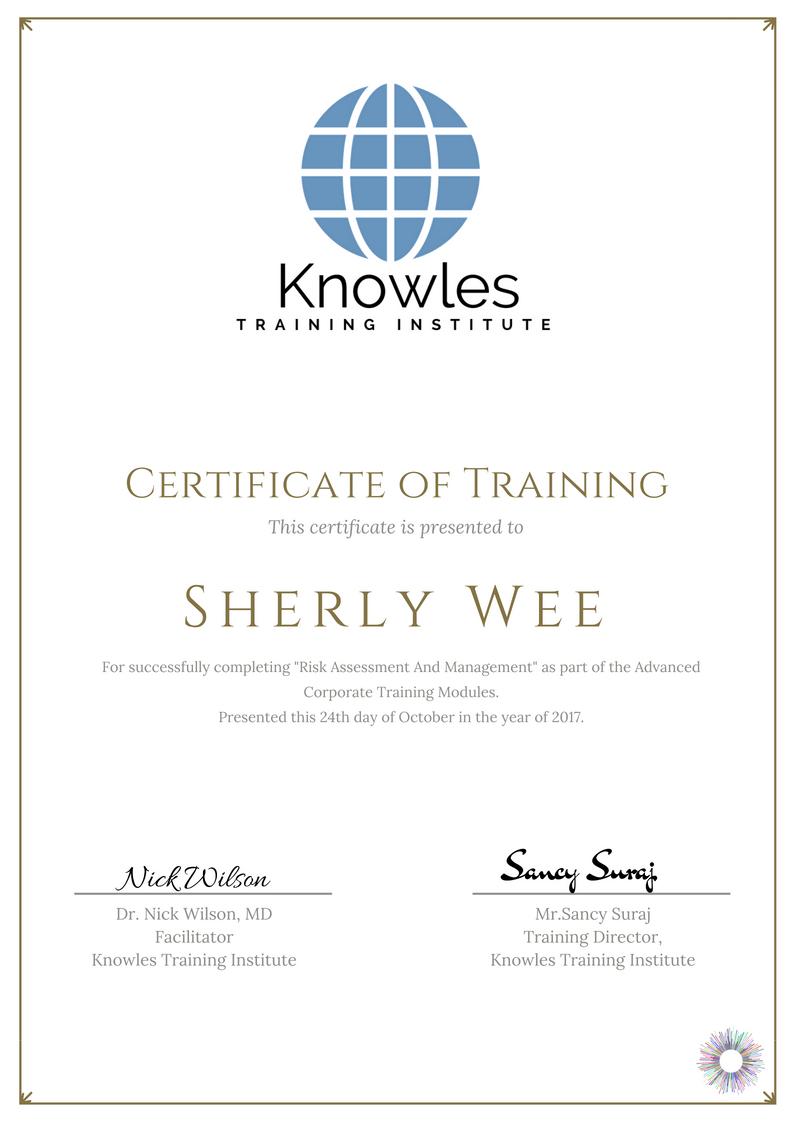
Course Fees
There are 3 pricing options available for this Risk Assessment And Management training course. Course participants not in Singapore may choose to sign up for our online Risk Assessment And Management training course.
SGD 1,334.96 For a 60-minute Lunch Talk Session.
SGD 584.96 For Half Day Course Per Participant.
SGD 884.96 For 1 Day Course Per Participant.
SGD 1,184.96 For 2 Day Course Per Participant.
Discounts available for more than 2 participants.
Course Discounts, Fundings & Subsidies
We have the following discounts, fundings & subsidies for this Risk Assessment And Management training course

Upcoming Risk Assessment And Management Training Course Schedule
Contact us for the latest Risk Assessment And Management course schedules:
Phone: +65 6714 6663
Email: contact@knowlesti.com
Message:
Download Risk Assessment And Management Course Brochure
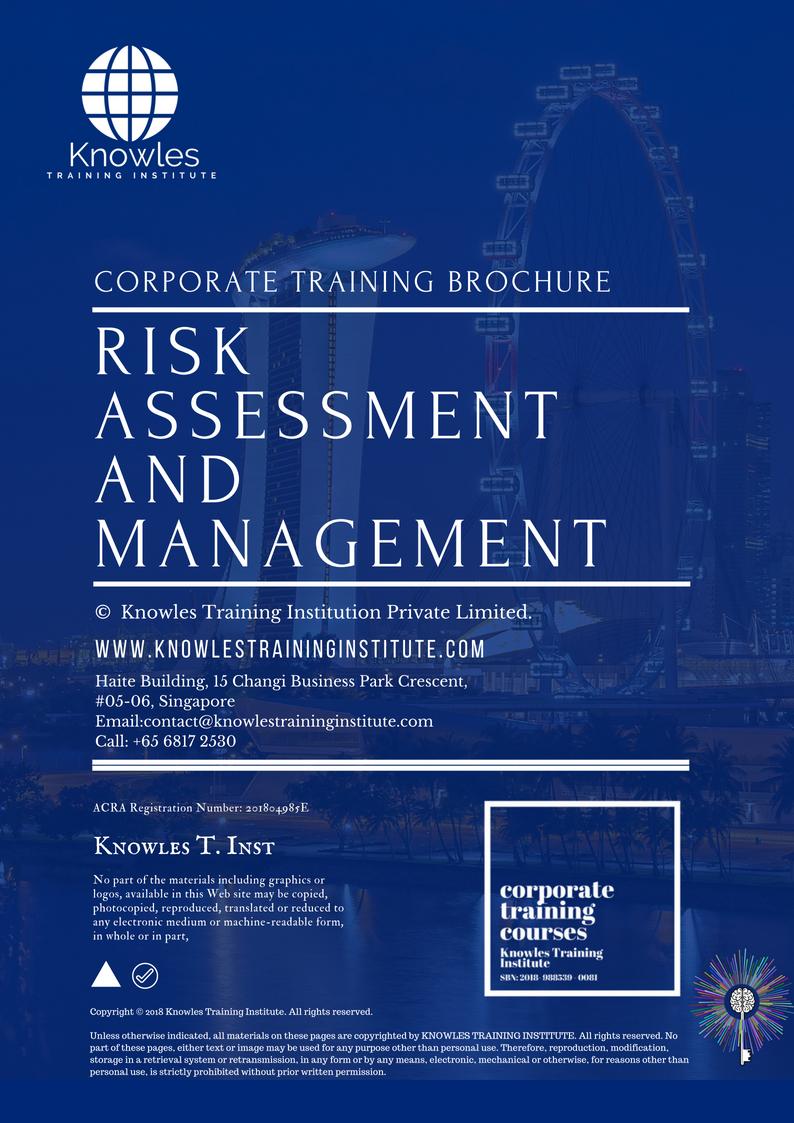
Request for this Risk Assessment And Management course brochure. Fill up the short information below and we will send it to you right away!
Post-Training Support: A vast majority of training does not have any effect beyond 120 days. But to work, training has to have a strong pre- and post-training component. Post-training reinforcement consequently helps individuals to recall the understanding and ask questions.
Blended Learning: Learning does not occur in the classroom. Virtually everybody prefers distinct ways of learning. Successful learning should have a multi-channel, multi-modal strategy.
We Understand The Industry: Similarly, we’ve got a profound comprehension of the business, business design, challenges, strategy and the that our participants are in and have designed the courseware to cater to their professional needs.
Course Content: Knowles Training Institute’s material is relevant, of high quality and provide specific learning outputs. As a result, Participants will leave the training course feeling as they have gained a strong understanding and will also be in a position to execute what they have learned sensibly.
Course Development — The workshop modules follow a systematic and logical arrangement. Therefore, this structure helps to ensure that the course material allows the facilitators to deliver the course in a logical arrangement. Consider the subjects as building bricks into learning, our facilitators slowly build towards a comprehensive picture of this entire topic.
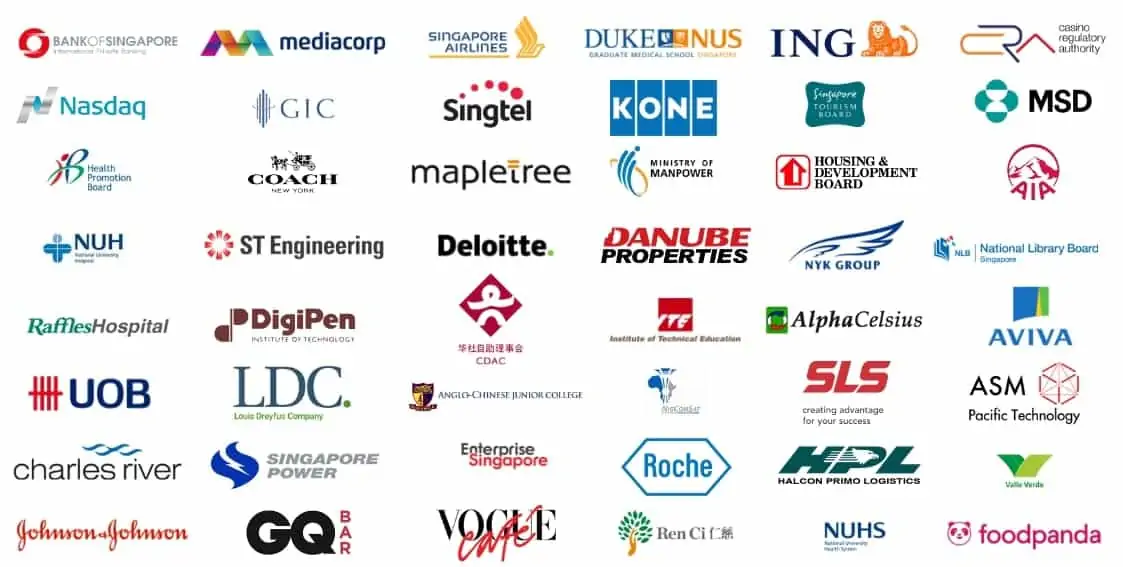

Course Enquiries

Fill up the form and we will get back to you in less than 1 working day.
Alternatively, give us a call to have one of our training consultants contact you. Our corporate training courses can be contextualized to meet your organization’s training needs. Leverage on our large pool of professional trainers and consultants for your organization’s training needs.
Office Address: 60 Paya Lebar Rd, #07-54 Paya Lebar Square, Singapore 409051
Office Phone: +65 6714 6663
Email: contact@knowlesti.sg
We Guarantee 100% Privacy. We Respect Your Privacy. Your Information Will Never Be Shared.
Questions
Risk management is the method of recognizing, assessing, and managing threats to an organization’s property and earnings. These warnings, or risks, could originate from a deep variety of sources, including financial uncertainty, legal accountabilities, necessary administration errors, accidents, and general hazards.
The 5 (Five) Steps In Risk Management:
- Step 1: Identify the Risk.
- Step 2: Analyze the risk.
- Step 3: Evaluate or Rank the Risk.
- Step 4: Treat the Risk.
- Step 5: Monitor to Review the risk.
Risk is referred to as the possibilities of having an accidental or negative outcome. Any development or activity that leads to damage of any kind can be referred to as risk. There are numerous types of risks that a firm might encounter and needs to defeat.
Here are some examples:
- Business risk
- Non-Business risk
- Financial risk
Risk management is essential in an organization because, without it, a firm is unable to define its goals for the future, possibly. If a company determines objectives without taking risks to the point, the chances are that they will fail to work towards a direction once any of those risks hit home.
7 (Seven) Risk Identification Techniques:
- Conducting interviews.
- Brainstorming.
- Checklists.
- Assumption Analysis.
- Cause and Effect Diagrams.
- Nominal Group Technique.
- Affinity Diagram.
Risk management is the method of evaluating the risk of loss or harm and then practicing steps to resist the possible danger. An example of risk management is when a person assesses the possibilities of having major vet bills and determines whether to purchase pet insurance.
Risk evaluation enables you to discover the significance of risks to the establishment and then to determine whether to allow a specific threat or take action to block or minimise it. To assess risks, it is essential to rank them once identified. This can be done by examining the consequence and likelihood of each risk.
Major Types Of Risks:
- Credit Risk (also known as Default Risk)
- Country Risk.
- Political Risk.
- Reinvestment Risk.
- Interest Rate Risk.
- Foreign Exchange Risk.
Market and credit risk management roles are especially stressful. It’s not just stress. It can likewise be the feeling of disempowerment. You’re there to heighten issues, but when you do, nothing is done about them.
Risk managers work with businesses in a variation of industries to help decrease risks. It’s their responsibility to help a business dodge costly pitfalls and keep all their workers safe and well. This job is essential to businesses who want to preserve their financial situation as well as their general business enterprise.
By following the same provided steps:
- Step 1: Identify the Risk.
- Step 2: Analyze the risk.
- Step 3: Evaluate or Rank the Risk.
- Step 4: Treat the Risk.
- Step 5: Monitor to Review the risk.
Risk assessment is a phrase used to explain the overall method where you: Recognize dangers and risk factors that have the likelihood to cause harm. (Hazard identification) Analyze and evaluate the risk connected with that hazard. (Risk analysis and evaluation)
Naturally, the purpose of risk management is to distinguish potential problems before they happen and have a plan for approaching them. Risk management studies internal and external risks that could negatively affect an organization.
Here are some benefits of Risk Management:
- It’s easier to spot projects in crisis in the future.
- There are lesser surprises.
- There are more satisfying quality data for decision making.
- Communication is elevated.
- Funds estimate rely less on guesses.
- The expectation of progress is set.
- The team stays focused.
There are no set rules on how a risk assessment has to be carried out, but there are several general principles that should be ensued.
- Identify the hazards
- Decide who might be harmed
- Evaluate the risks and decide on control measures
- Record your findings and implement them
- Review your assessment and update if necessary
There are no rules on how a risk assessment has to be carried out, but there are several principles that should be ensued.
- Identify the hazards
- Decide who might be harmed
- Evaluate the risks and see what control measures you should implement
- Record your findings and implement them
- Review your assessment and update if necessary
There are five methods you can implement to control risk: Avoiding, Retaining, Spreading, Preventing and Reducing Loss, and Transferring Risk.
There are four components to any functional risk assessment, and they are Asset Identification, Risk Analysis, Risk likelihood & impact, and Cost of Solutions.
